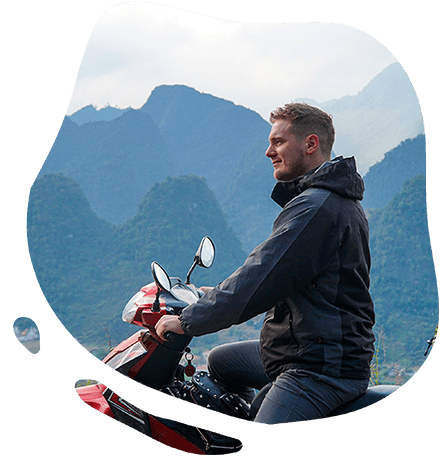The history & meaning of Lung Cu Flag Tower
What is the Lung Cu Flag Tower
The Lung Cu Flag Tower is an iconic structure located atop Rong Mountain, towering at an altitude of 1,700 meters above sea level. Standing tall at 33 meters, it proudly displays a massive flag spanning 54 square meters, symbolizing Vietnam’s 54 ethnic groups. Positioned at the northernmost point of Vietnam, it marks the border with China and holds significant cultural and patriotic importance for the country.
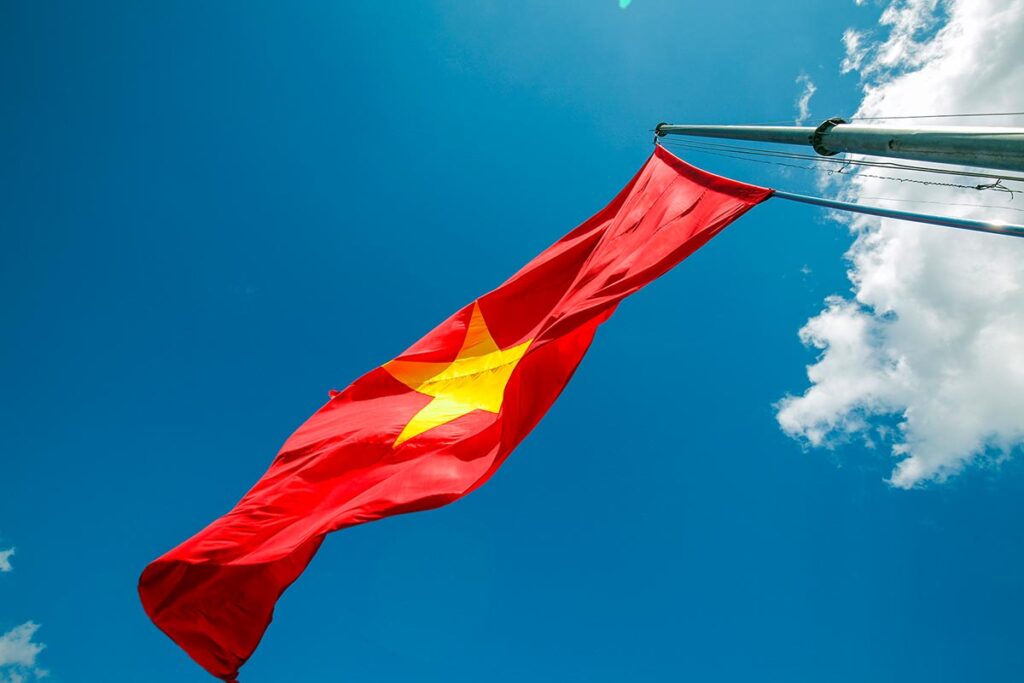
Short history
The Lung Cu Flag Tower was constructed in 1887 during the French colonial period in Vietnam to mark the country’s northernmost point and serve as an important location for managing and protecting the Vietnamese territory. It held strategic significance in overseeing the border region and safeguarding the nation’s interests.
In 1994, the tower was recognized as a cultural heritage site in Vietnam, and since then, it has been a symbol of Vietnamese patriotism and a popular tourist destination.
Visiting the Lung Cu Flag Tower
1. Parking
To reach the top, you’ll encounter 839 stone steps divided into 3 sections. If you’re traveling by motorbike, you can drive to the top parking lot at the third part, where you only have to walk the last 283 steps.
For those arriving by car, your driver will park at the bottom of the mountain, and you can either take an electric buggy to the top parking lot or climb all 800+ steps.
2. Entrance fee
At the third part, you’ll find a small ticket booth where the entrance fee to climb the last 283 steps up to the Lung Cu Flag Tower is 20,000 VND per person (approximately 1 USD).
3. Viewing platform
From the viewing platform atop the mountain and at the feet of the Lung Cu Flag Tower, you’ll enjoy a panoramic view of the surrounding mountains, countryside, and villages. As this location marks the northernmost point of Vietnam, you can also catch glimpses of the mountains in China.
4. View from top of flag pole
For an even better view, climb up the actual flag tower. The 360° view from the little platform is simply astounding. On a clear day, you’ll be treated to breathtaking vistas of both Vietnam and China. And of course, the massive Vietnamese flag atop the tower offers great photo opportunities.
5. Enjoy Lung Cu surrounding
Even if you’re not particularly interested in visiting the Lung Cu Flag Tower, don’t forget that there is much more to see and do in the surrounding area. Experience the stunning mountain scenery along the way and explore the diverse local ethnic villages. Read our 5 highlights below to make sure you don’t miss out on anything.
5 highlights of Lung Cu
1. Panoramic Views from Lung Cu Peak
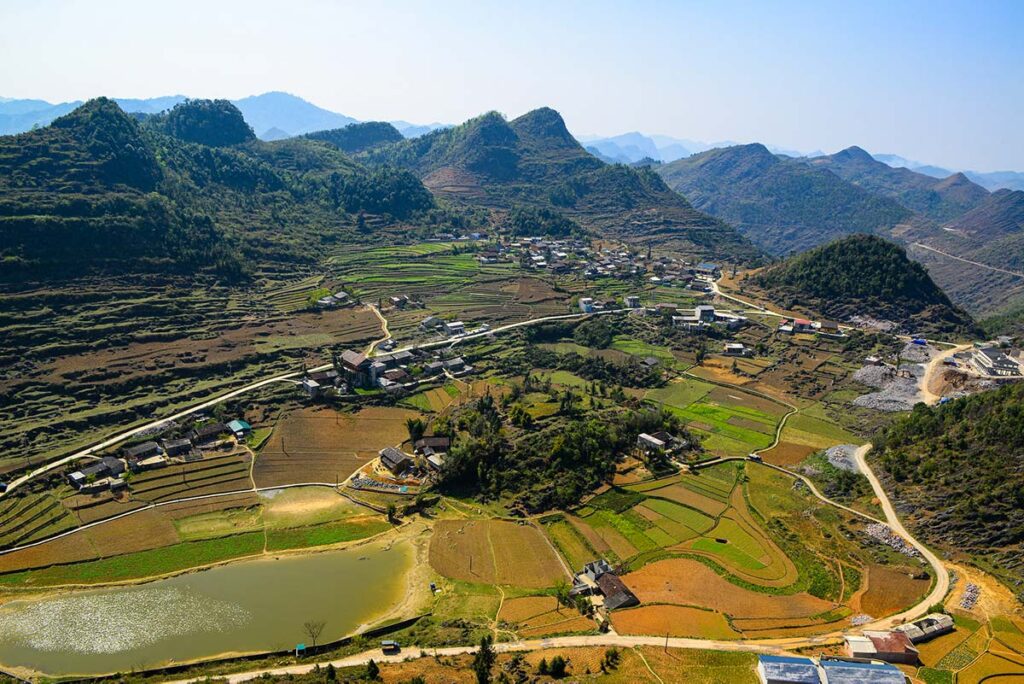
For most local Vietnamese travelers, the main highlight here is the iconic Flag Tower, a proud symbol of Vietnam. If you are visiting this area, a stop here is definitely worth it. Enjoy the breathtaking views from the top and check off the northernmost point of Vietnam from your bucket list.
2. The scenic road between Dong Van & Lung Cu
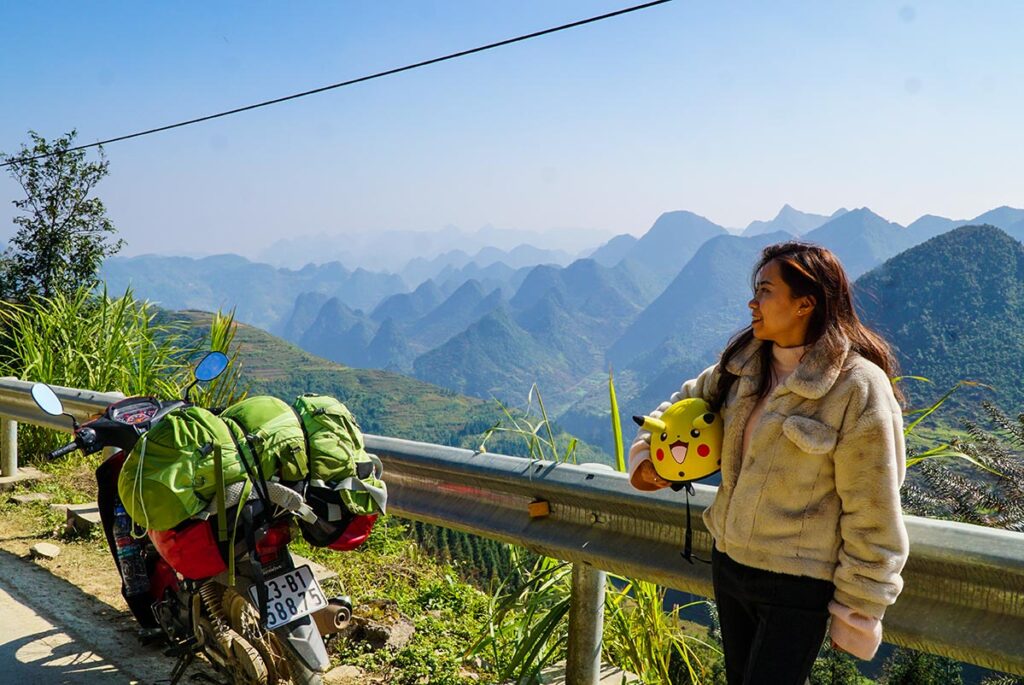
For most international travelers, it is not the Flag Tower itself, but the scenic road from Dong Van to Lung Cu that captivates them. The mountains in this area offer some of the most epic views in all of Vietnam! Every few hundred meters or after every turn, you’ll want to stop again to take in the mesmerizing scenery and capture stunning photographs.
3. Ethnic minority villages
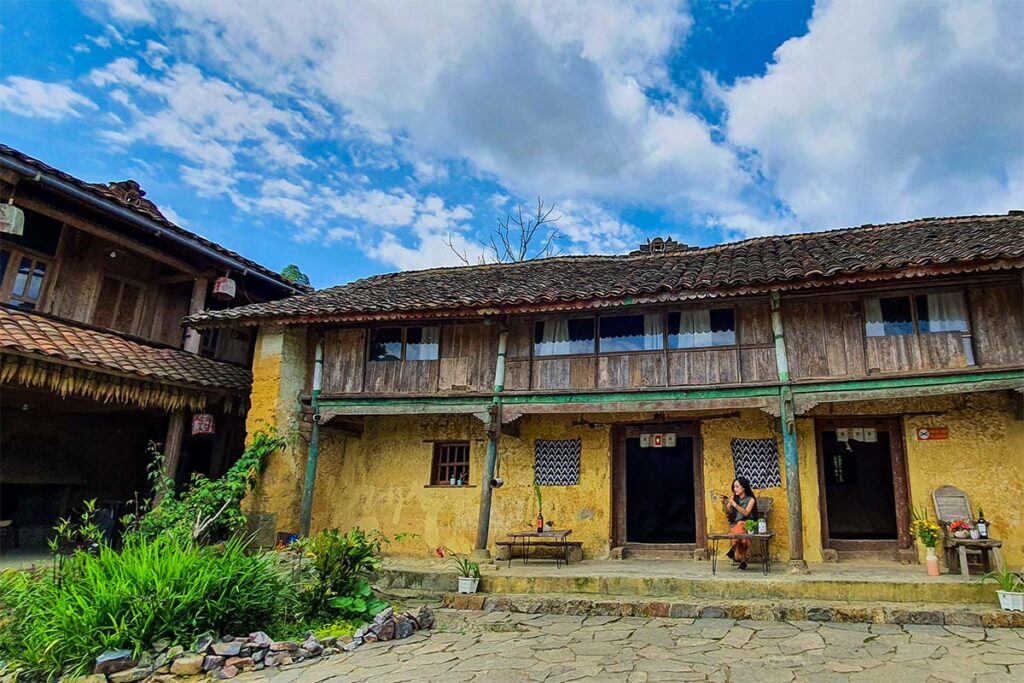
Another remarkable aspect of this area is the presence of villages belonging to the Lo Lo ethnic group. These communities reside in houses made of primary yellow clay and wood, giving you a feeling of stepping back in time. The villages’ exquisite architecture and the colorful attire worn by the ethnic minority women make it an enchanting cultural experience. Ma Le and Lo Lo Chai Village are particularly worth visiting.
4. Stay overnight in a homestay
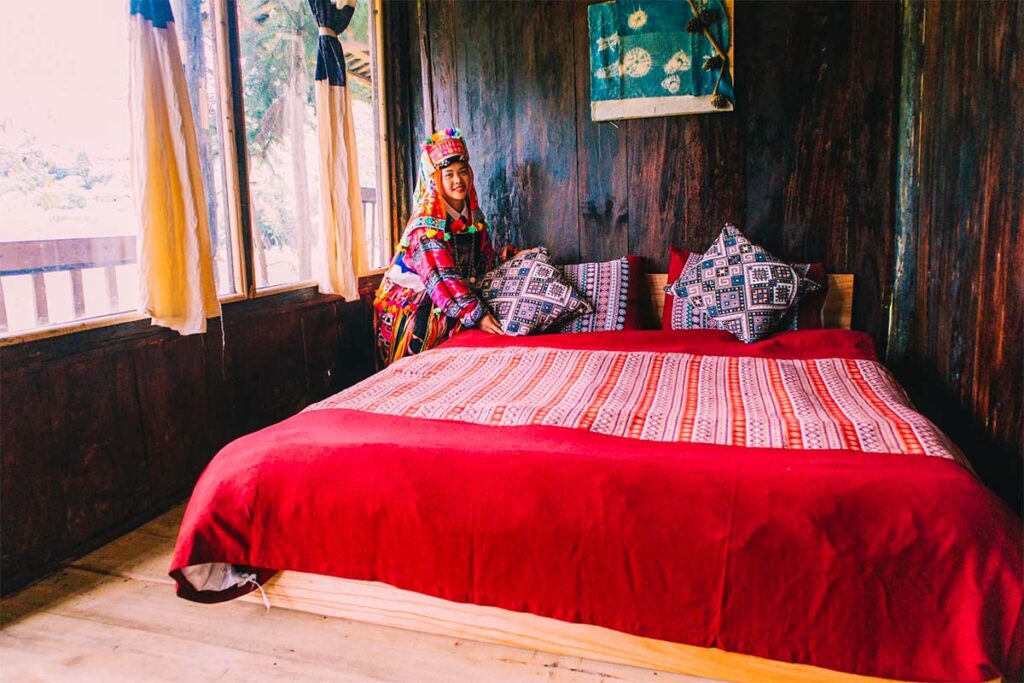
If you desire a deeper immersion into the culture of these ethnic minorities, consider staying in an authentic homestay hosted by local families. This experience is one of the most unique opportunities you can have in Vietnam. Engage in a family dinner, witness their way of life up close, and gain a profound understanding of their distinctive culture.
5. Hiking and trekking opportunities
The hilly terrain and ethnic villages around Lung Cu present excellent opportunities for hiking and trekking. Immerse yourself in nature, explore remote trails, and encounter the rich cultural heritage of the local communities.
6. Buckwheat flower fields
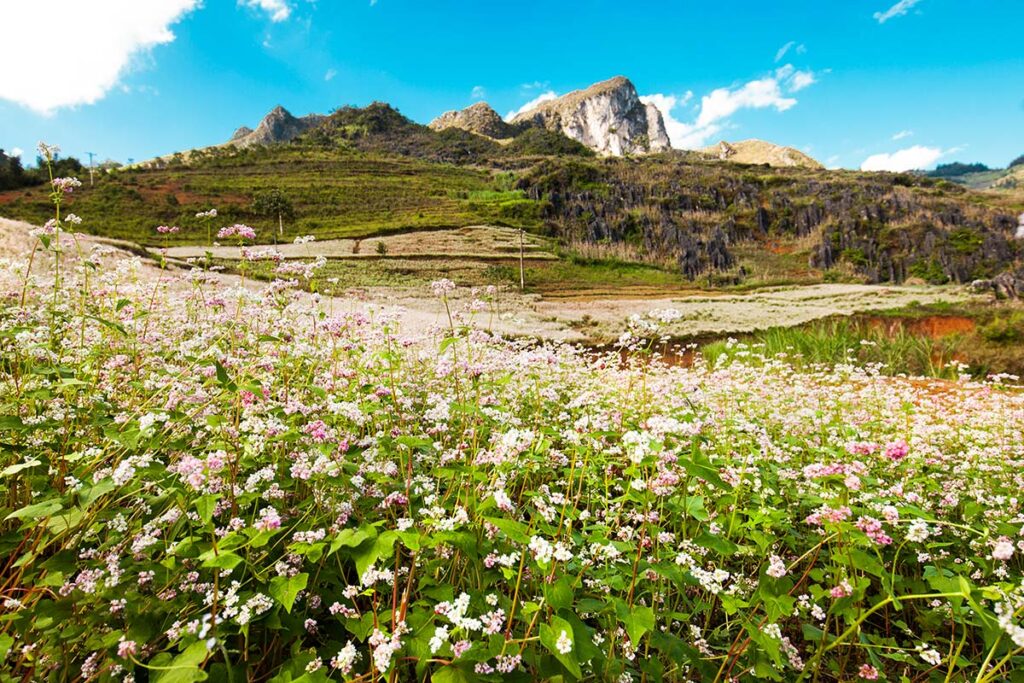
How to get there?
Lung Cu is often included in most Ha Giang Loop itineraries, offering travelers the chance to explore many other amazing sights in the province of Ha Giang. To start the loop, you first need to travel from Hanoi to Ha Giang.
1. From Hanoi to Ha Giang
You have several options to travel from Hanoi to Ha Giang, all of which involve road travel, as there are no airports or train stations in the region.
- Sleeper Bus: Traveling at night is a convenient way to save time during the day, but be mindful of the reputation of the specific bus company.
- VIP Sleeper Bus: For a slightly higher cost, you can enjoy a larger seat and more comfort during the journey.
- : If you prefer not to travel at night, affordable and comfortable limousine buses are a great choice.
- Private Car: While more expensive, this option offers the most flexibility with pick-up and drop-off locations and timing.
2. From Ha Giang to Lung Cu
Once you arrive in Ha Giang, you can begin your Ha Giang Loop adventure. There are three ways to explore the area.
- Driving a Motorbike: This option provides a great sense of adventure and freedom, but it’s not recommended without prior motorbike driving experience and a valid motorbike license with an IDP.
- Easy Rider: Joining an Easy Rider tour means riding on the back of a motorbike with an experienced driver who serves as your guide. It offers an adventurous motorbike trip while ensuring a safer experience.
- Car: Since Vietnamese law prohibits foreigners from driving themselves, a car journey includes a driver. This option provides the most comfort with comfortable seats and protection from the weather, making it suitable for various weather conditions, such as rain, hot summers, and cold winters.
Accommodations in Lung Cu
Tips for staying in Lung Cu
Staying in Lung Cu offers a wonderful alternative to Dong Van, with numerous small ethnic villages providing an authentic and off-the-beaten-track experience. However, it’s essential to manage your expectations regarding comfort and amenities. Few restaurants are available in the area, but most homestays offer meals. Remember to bring sufficient cash, as ATMs are scarce, and card payments may not be widely accepted.
Recommended accommodations
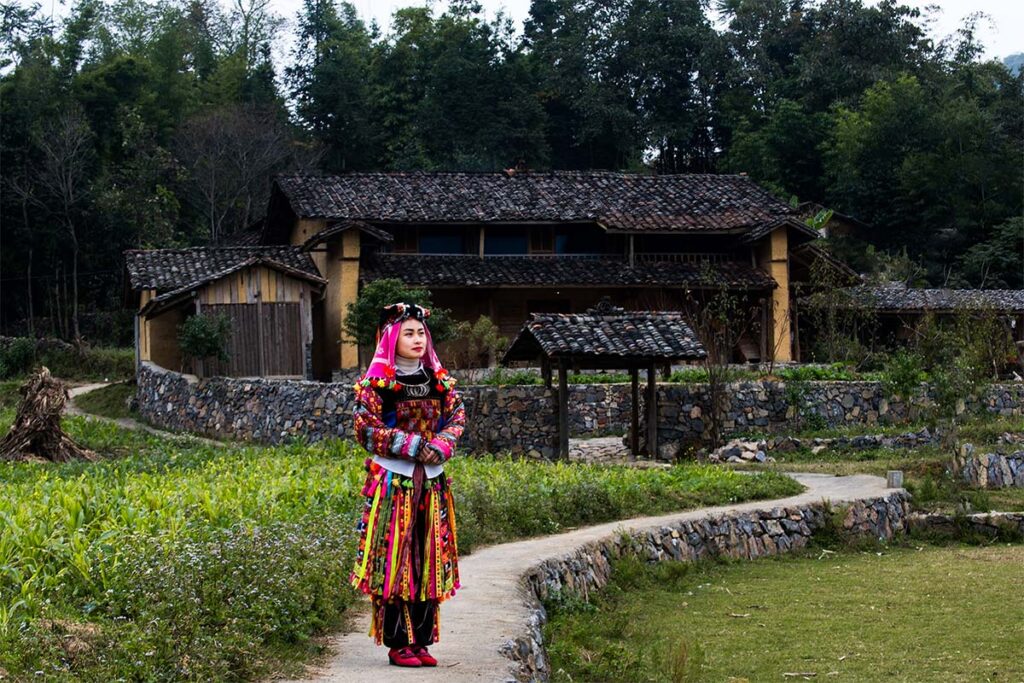
- Lolo Eco House – Experience the true essence of local life by staying here. The practical traditional house is set in a beautiful location and run by an ethnic minority family, ensuring excellent service.
- Sister’s House – Hidden behind the village of Lung Cu, this homestay offers basic rooms but an incredibly authentic experience. The warm and friendly family provides a great common room with a pool table.
- Homie Homestay – Hosted by a lovely family in a traditional yellow clay house, this homestay offers a glimpse into local life in Lung Cu.
Tips for visiting Lung Cu
Respect the local culture – Always ask for permission before taking photos of ethnic minorities, and dress modestly to show respect for their traditions.
Best time to visit – While Lung Cu can be visited throughout the year, consider planning your trip during the autumn and spring months (September – November and February – April) for pleasant weather and clear skies. Avoid the summer months (June – August) due to higher chances of rain, and be prepared for cold temperatures in December and January.
Cash and ATMs: Bring enough cash with you, as ATMs are scarce in Lung Cu, and card payments may not be widely accepted.
FAQ about Lung Cu
Is Lung Cu worth visiting?
Absolutely, Lung Cu is often considered the “roof of Vietnam” and offers breathtaking panoramic views from its iconic flag tower. It is a place of historical and cultural significance, making it well worth the visit for anyone traveling in the Ha Giang region.
Where is Lung Cu located?
Lung Cu is located in the northernmost part of Vietnam, approximately 24 kilometers from Dong Van town. It’s in the Dong Van district of Ha Giang Province, close to the border with China.
Can you stay in Lung Cu?
Yes, there are some homestays and guesthouses where you can stay. Accommodations are relatively basic, but they offer a unique opportunity to experience local culture and customs.
What are the main attractions in Lung Cu?
The Lung Cu Flag Tower is the most iconic attraction, from which you can see sweeping views of the surrounding landscapes. The area is also known for its unique terraced fields and the traditional lifestyle of the ethnic minority communities that live here.

